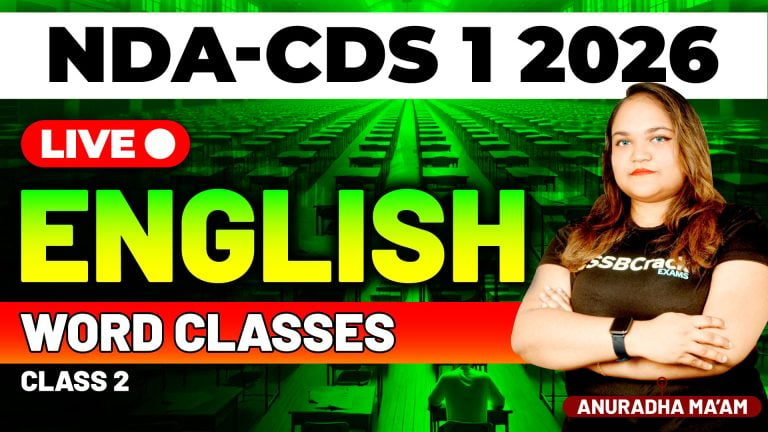Set Theory is a fundamental topic in mathematics and plays a significant role in the Combined Defence Services (CDS) Exam. To help students strengthen their understanding and problem-solving skills, a recent class was dedicated to discussing Set Theory, its subtopics, and practical applications. The session combined theory with practice, giving students a comprehensive grasp of the subject.
This blog will highlight the key takeaways from the class, discuss essential preparation strategies, and conclude with actionable tips for success in the CDS Exam.
Key Highlights of the Class
1. Basics of Set Theory
The class began with an introduction to the concept of sets—a collection of well-defined objects. The instructor explained how sets are represented in two forms:
- Roster/List Form: Listing all elements of a set.
- Set-Builder Form: Describing the property shared by the elements of the set.
2. Types of Sets
The session covered the various types of sets, including:
- Null Set (Empty Set): A set with no elements.
- Finite and Infinite Sets: Depending on whether the number of elements is countable or not.
- Equal Sets: Sets with exactly the same elements.
- Subsets and Supersets: Exploring the relationship between sets and their parts.
- Universal Set: The set that contains all elements under consideration.
3. Operations on Sets
The class delved into operations that can be performed on sets, such as:
- Union: Combining all elements from two sets.
- Intersection: Finding common elements between two sets.
- Difference: Identifying elements in one set but not the other.
- Complement: Elements not in the given set but in the universal set.
Each operation was explained using examples, making the concepts easier to understand and apply.
4. Practice Questions
The session concluded with a discussion of practice questions to solidify the concepts covered. These included:
- Finding unions and intersections of given sets.
- Identifying subsets and supersets.
- Solving problems involving set operations, such as differences and complements.
By addressing real-world exam-style questions, the class ensured that students were ready to tackle set theory problems in the CDS Exam.
Strategies for Preparing Set Theory for the CDS Exam
Set Theory can be a scoring topic if approached systematically. Here are some strategies to help you excel:
1. Understand the Basics
- Focus on definitions and types of sets. Clarity in fundamental concepts is key.
- Practice converting sets between roster and set-builder forms.
2. Memorize Key Operations
- Familiarize yourself with operations like union, intersection, difference, and complement.
- Understand how these operations are visually represented using Venn diagrams.
3. Solve a Variety of Problems
- Begin with simple problems to build confidence, then move on to more complex questions.
- Solve examples that involve multiple operations on sets.
4. Review Past Year Questions
- Analyze set theory questions from previous CDS exams to identify patterns and common types.
- Practice under timed conditions to improve speed and accuracy.
5. Use Visual Aids
- Practice drawing Venn diagrams for set operations, as they can simplify complex problems.
- Visual representations often make solutions clearer and faster.
6. Regular Revision
- Create concise notes or flashcards summarizing key points.
- Revise regularly to ensure concepts remain fresh in your mind.
Common Mistakes to Avoid
- Overlooking Basic Definitions: Misunderstanding fundamental terms can lead to errors in solving problems.
- Ignoring Simplification: Always simplify sets and operations where possible.
- Confusion with Complement and Difference: Pay close attention to what the question asks regarding these operations.
- Not Practicing Enough: Theory alone isn’t enough—practicing problems is essential for success.
Conclusion
The recent class on Set Theory provided an in-depth understanding of this crucial topic for the CDS Exam. By focusing on fundamental concepts, operations, and problem-solving techniques, the session prepared students to tackle related questions confidently.
To excel in Set Theory, aspirants should prioritize building a solid foundation, practicing extensively, and revising regularly. By combining consistent effort with strategic preparation, success in this topic—and the CDS Exam as a whole—is well within reach.
Stay determined, practice diligently, and let every problem you solve bring you closer to your goal!

















